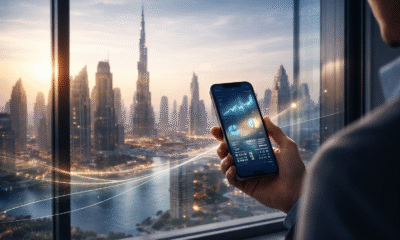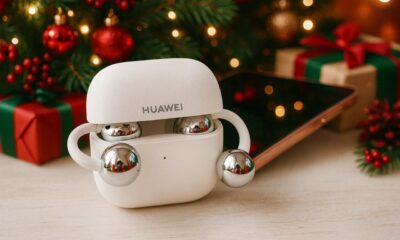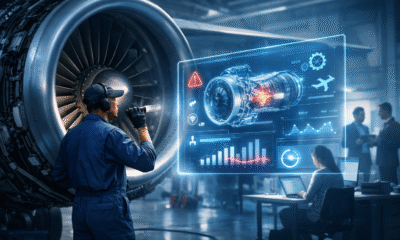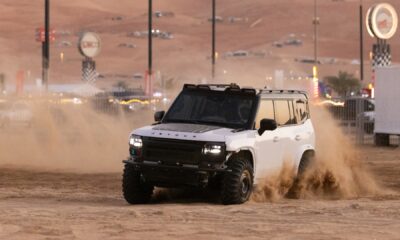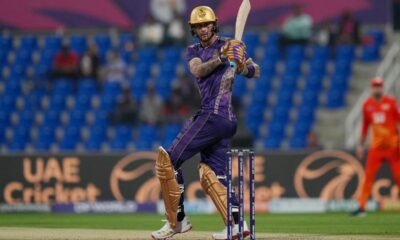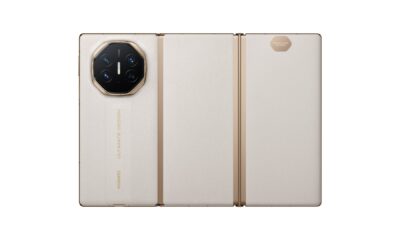VAR
Samsung Galaxy Z Fold6 vs Google Pixel 9 Pro Fold: Clash Of The Folding Phenoms
Foldables belong to a niche category of the flagship smartphone segment. These cutting-edge, dual-screened gadgets are reserved for the ones willing to spend considerably more than what a regular (still expensive) flagship like the iPhone 15 Pro Max or Samsung Galaxy S24 Ultra costs. The Samsung Galaxy Z Fold6 and Google Pixel 9 Pro Fold are two of the latest and greatest entrants into this elite arena. They are the most advanced embodiments of the foldable smartphone tech, flaunting thinner bodies, larger screens, and sturdier, more efficient hinges. So then, which of these state-of-the-art, futuristic pieces of consumer tech is the best? Moreover, which one would suit your needs the best? Find out in this in-depth Samsung Galaxy Z Fold6 vs Google Pixel 9 Pro Fold comparison.
Samsung Galaxy Z Fold6 — The Trailblazer Of Foldable Smartphones
Ever since its inception, the Samsung Fold series has played a pivotal role in popularizing foldable smartphones. The Galaxy Z Fold6 is the latest heir of this innovative bloodline. The Fold6 sports a squared-off design compared to the more rounded-off aesthetics of its immediate predecessor. Upgrades underneath its skin are incremental and there isn’t much to be super-excited about, except for the new AI features. However, Samsung has strengthened the dual rail hinge of the Fold6 with a more rigid folding edge, which they claim is better at distributing the shock of external impacts. While we see that smartphone hardware is generally evolving at a slower pace, it is actually satisfying to know that Samsung putting in significant effort to make their foldables more durable. While the Fold6 shares all other technological aspects with regular smartphones, including performance and cameras, enhancing and upgrading the foldable components, seems like the right move. On top of that, the more squarish design doesn’t just deliver sleeker aesthetics but also provides a better in-hand feel, thus enhancing the user experience.

Keeping the tech aspects apart, from a user perspective, the Fold6 is the most polished iteration of the Fold series, not simply because it’s the latest but because of the re-proportioning of the design. The cover screen is now slightly wider, and less like a TV remote, and the weight has come down by around 14 grams compared to the Fold5. Another groundbreaking upgrade is on the ingress protection front. While the previous Fold models were limited to only water resistance, the Fold6 offers IP48 dust and water resistance. In simple words, the 4 in the rating ensures that no particles larger than 1 mm can enter the device. As it happens every year, the chipset has been upgraded to the latest in the market. Powering the Fold6 is the best of Android chipsets, the Snapdragon 8 Gen 3. Other than these significant upgrades, the Fold6 mostly matches its predecessor’s hardware components including camera hardware, battery size, and charging speeds.
Google Pixel 9 Pro Fold: The Vanilla Foldable Experience
Software experience is the paramount strong point of any Pixel phone. However, that isn’t only how the first Pixel Fold amazed us. Google’s first foldable was a well-proportionate device in terms of screen real estate. However, these user advantages were overshadowed by some of the disadvantages of the design itself. The Pixel Fold was too bulky to deliver the goodness of the proportionate screen during prolonged usage. On top of that, the original Pixel Fold didn’t open or fold flat, which further took away from the user experience, when compared to the more refined competitor of the time — the Samsung Galaxy Z Fold5. However, for a first-generation foldable, it can undeniably be said that the Pixel Fold was a superlative product.
Recently, Google introduced the successor to the original Fold, along with the Pixel 9 series. Now called the Google Pixel 9 Pro Fold, a name that aligns better with the current flagship lineup, the new folding smartphone is seemingly leaps and bounds ahead of its predecessor. For starters, the new phone is taller and slimmer, while the fluid-friction hinge has been upgraded for increased durability and delivering a satisfying snap when the phone is opened. Both the displays are now larger, delivering a more immersive user experience. The cover screen has grown from a 5.8-inch unit with a peak brightness of 1,550 nits in the previous FOld to a 6.3-inch unit with a peak brightness of 2,700 nits. The larger inner screen of the Pixel Fold measured 7.6 inches diagonally (1,450 nits peak brightness) which is now upgraded to a massive 8-inch unit (2,700 nits peak) in the Pixel 9 Pro Fold.

The Pixel 9 Pro Fold has also gained a superior ultra-wide lens which now features a larger sensor, offering 127 degrees of truly “ultra-wide” coverage. Furthermore, both the front cameras (cover screen and inner screen) have been upgraded to the same 10 mp shooter. On the battery front, it is surprisingly a downgrade from the 4,821 mAh unit of the original Pixel Fold to a 4,650 mAh cell in the 9 Pro Fold. However, as Google is a smartphone company focused primarily on software experience and optimization, we’ll have to test the phone out extensively to determine whether the downsizing has inversely affected the battery life or ended up boosting it. These are the groundbreaking upgrades Google has bestowed upon the Pixel 9 Pro Fold, resulting in an all-encompassing redesign of their foldable. For a second-generation foldable, the Pixel 9 Pro is now up to the mark and capable of competing with the mighty Samsung. However, there is one major drawback, which we will address in the comparison.
Samsung Galaxy Z Fold6 vs Google Pixel 9 Pro Fold: So Then, Which Foldable Triumphs Over The Other?
It’s time for the battle now and firstly, let’s discuss similarities and keep them apart. Both the Samsung Galaxy Z Fold6 and Pixel 9 Pro Fold run Android 14 out of the box and are promised seven major updates. Both feature crisp and bright OLED displays inside out, although of different sizes and specs. Also, both the phones are equipped with three rear cameras each and a total of two front cameras, one on the cover screen and one inside. Now for the differences, I’ll lay them out sector by sector.
The Samsung Galaxy Z Fold6 Is The More Powerful One
Processing power is one of the central factors when it comes to the performance of any smart device or computer, including smartphones. The Samsung Galaxy Z Fold6 is powered by the latest and greatest processor from Qualcomm — the Snapdragon 8 Gen 3. The Pixel 9 Pro Fold on the other hand is invigorated by Google’s in-house Tensor G4 chipset. While both of these powerhouses are built on the 4 nm architecture, the Snapdragon 8 Gen 1 is far superior to the Tensor G4 in terms of sheer processing power and gaming performance.

According to tests conducted by NanoReview, the Snapdragon 8 Gen 3 performs 76% better in floating-point computation and shows up to 55% higher AnTuTu 10 benchmark scores. The 8 Gen 3 also supports 20% higher memory bandwidth (77 against 64 GB/s) and runs on a 6% higher CPU clock speed (3300 Vs 3100 MHz). On paper, the only pro in favor of the Google Tensor G4 over the Snapdragon is its higher GPU frequency (~22%). However, when tested out by NanoReview, the GeekBench compute score of the Adreno 750 GPU in the 8 Gen 3 completely obliterates the Mali-G715 of the Tensor G4. The Adreno 750 scored 14,269, which is around 148% higher than the 5,758 score of the Mali-G715.
This means that regardless of whether it is single-core, multicore, or GPU performance, the 8 Gen 3 is miles ahead of the Tensor G4. We hope the Tensor series to evolve into a more capable and potent chipset as its next iteration, the Tensor G5, is reportedly being built on TSMC’s 3 nm process. But as of now, it is no match to the mighty, Snap-py, Dragon.
The Pixel 9 Pro Fold Takes The Cake For The Software Experience
Google offers arguably the best Android user experience because the OS itself is made by Google in the first place. Hence, the vanilla Android experience provided by Google phones remains unmatched and unaffected by competitors. It is just so pleasantly designed, with the right amount of simplicity and vibrancy. There is absolutely zero bloatware, and it is exceptional to use in both screens of the Pixel 9 Pro Fold. And then there are the clever features Google has reserved for their own phones. These features such as Live Caption, Pixel Studio, Pixel Screenshots Circle To Search, and Now Playing, all contribute to delivering a superior user experience.

Although the latest Galaxy devices including the Fold6 come integrated with AI features, Google is simply better in terms of overall software experience. On top of all that, the latest range of Pixel phones, also offer a bunch of cool new Camera software trickery. The most prominent one is the “Add Me” feature which allows the photographer to be in the photo by combining two consecutive images together. The results of this AI feature are too good to be true, and it is just one example of the Pixel’s impressive software prowess.
Samsung Galaxy Z Fold6 vs Google Pixel 9 Pro Fold: Other Significant Hardware Differences
Apart from the processor, there are some other major hardware changes differentiating these foldables from each other. They are as follows –
Size, Convenience, And Protection: The Lighter One vs The Thinner One
The Samsung Galaxy Flip6 weighs in at 239 g whereas the Pixel 9 Pro Fold is heavier at 257 g. To put that into perspective, the iPhone 15 Pro Max weighs 221 grams, and the S24 Ultra 232 grams. So in comparison, the Flip6 is only marginally heavier, while the Pixel is considerably more hefty, which might affect day-to-day usability. On top of that, the Flip6 offers IP48 dust and water resistance, while the Pixel is limited to IPX4 water resistance. However, the Pixel is thinner and wider, both when folded and unfolded. The Pixel 9 Pro Fold has a thickness of only 10.5 mm when folded, against the 12.1 mm thickness of the Fold6.

Screens: The Pixel Offers More
The cover screens of both these phones measure 6.3 inches, with negligible differences in resolution and pixel density. However, the Pixel 9 Pro Fold has a wider aspect ratio and looks more regular against the longer structure of the Flip6. Similarly, the inner screen of the Pixel 9 Pro Fold is larger, measuring 8 inches diagonally, against the 7.6 inches provided in the Flip6. Both the inner and outer screens of the Pixel also boast a 100 nits higher peak brightness rating of 2700 nits.
Storage: Faster, Larger Storage Options vs Extra RAM
The Samsung Galaxy Z Fold6 offers up to 1 TB of fast UFS 4.0 storage, while the Pixel 9 Pro Fold is capped at 512 GB, that too, slower UFS 3.1. Conversely, the 9 Pro Fold offers up to 16 gigs of RAM, whereas the Flip6 is limited to 12.
Camera: 8K Video Recording vs Better Front Cameras
On the optics front, the Pixel 9 Pro Fold, as mentioned earlier, offers a wider ultra-wide lens — 127-degree coverage against 123 in the Fold6. The Fold6 retaliates by offering 8K video recording when the Pixel is limited to 4K. When it comes to front cameras, the Pixel 9 Pro Fold dominates by offering the same 10 MP camera with autofocus on both its screens. The Samsung, while incorporating a 10 MP camera onto the inner screen, is limited to a 4MP sensor in the cover screen, both of them without autofocus functionality.
Battery: Larger Battery vs Faster Charging
Keeping the Galaxy Fold6 alive is a 4,400 mAh battery pack that supports wired fast charging of up to 25 watts and wireless up to 15 watts. It further offers reverse wireless charging functionality, rated up to 4.5 watts. The Pixel 9 Pro Fold features a larger 4,650 mAh battery pack. However, its wired fast charging wattage hasn’t been revealed by Google yet, but we know that the wireless charging speed is rated at a mere 7.5 watts. Google just mentions “hours of power in minutes of charge with Google 45W USB-C Charger”, although multiple sources mention that the wired charging speed is capped at 21 watts.

Samsung Galaxy Z Fold6 vs Google Pixel 9 Pro Fold: Crowning the Foldable Champion
We have analyzed the specs and features of these two foldables in-depth and we conclude that we would prefer both of these devices; just for different usage styles. It might seem like the usual diplomatic answer, but hear me out. The Samsung Galaxy Z Fold6 is a more performance-oriented device, offering phenomenal processing power compared to the Pixel. The Google Pixel 9 Pro Fold, on the other hand, dominates on the software front with its clever tricks that are not just gimmicks but legitimately usable in daily life. Hence, you will have to make a choice based on your needs, preferences, and aesthetic taste. To help make your decision easier, here’s a simplified list of differentiating factors that set these two impressive foldable phones apart.
| Samsung Galaxy Fold 6 | Google Pixel 9 Pro Fold |
| Lighter | Thinner And Wider |
| Stronger Processor | Vanilla Android Experience |
| Dust Resistance / Ingress Protection | Larger, higher resolution screens with slightly higher brightness |
| Up to 1 TB Of UFS 4.0 Storage | Up to 16 GB RAM |
| Faster Charging Speeds | Larger Battery |
| 8K Video Recording | Higher-resolution front cameras |
Uncategorized
What Makes HUAWEI FreeClip 2 the Best Open-Ear Earbuds Yet?
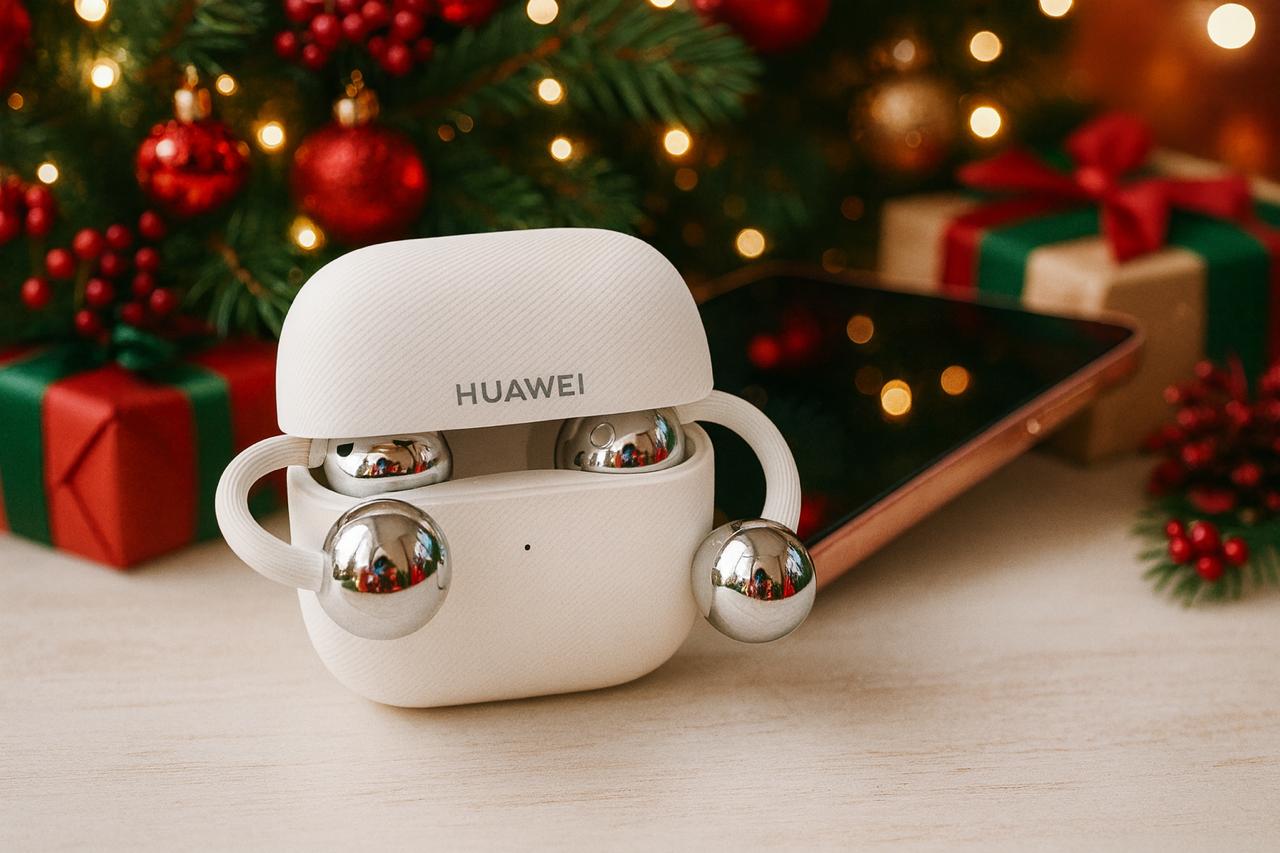
It has been two years since the debut of the original HUAWEI FreeClip, Huawei’s first-ever open earbuds that took the market by storm. Its massive popularity proved that the world was ready for a new kind of listening experience. The new HUAWEI FreeClip 2 tackles the hard challenges of open-ear acoustics physics head-on, combining a powerful dual-diaphragm driver with computational audio. It delivers depth and clarity, which was once thought impossible with an open-ear design. Solving the acoustic limitations of open-ear audio alone would have been sufficient to make the HUAWEI FreeClip 2 our pick for best open-ear audio.
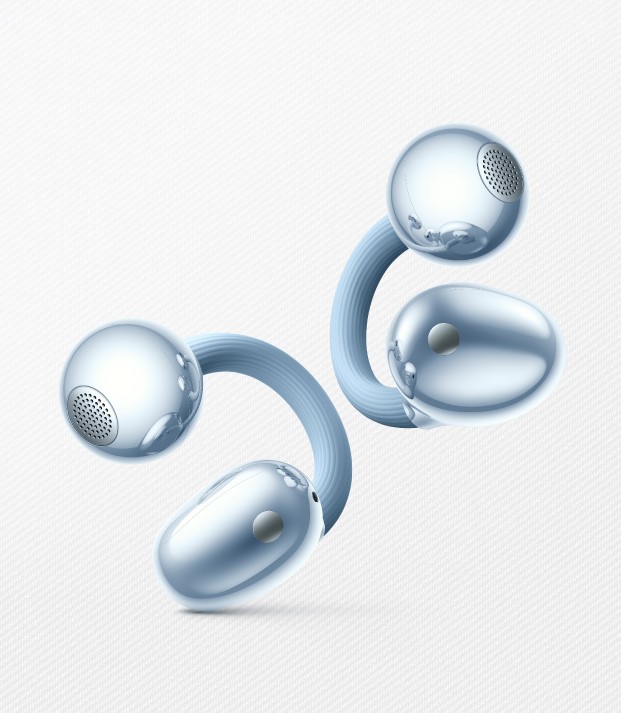
But it is way more than that!
Comfortable C-Bridge design
The HUAWEI FreeClip 2 earbuds weigh only 5.1 g per bud, a 9% reduction from the previous generation. This lightweight architecture ensures an effortless experience, perfect for long calls, workouts, and commutes, allowing you to wear them all day without fatigue. The comfort bean is 11% smaller than the previous model, yet the design provides a secure fit that prevents the earbuds from falling out, even during intense activity.
Constructed from a new skin-friendly liquid silicone and a shape-memory alloy, the C-bridge is 25% softer and significantly more flexible than its predecessor. Finished with a fine, textured surface, it ensures a comfortable, irritation-free wearing even after extended use.
Adaptive open-ear listening
The acoustic system has been significantly upgraded, featuring a dual-diaphragm driver and a multi-mic call noise cancellation system. This setup not only delivers powerful sound but also maximises space efficiency. That’s why, despite their small size, these earbuds can deliver substantial acoustic performance.
The Open-fit design of the earbuds demands high computing power to maintain sound quality and call clarity. The HUAWEI FreeClip 2 offers ten times the processing power of the previous generation, serving as Huawei’s first earbuds to feature an NPU AI processor for a truly adaptive experience. The new dual-diaphragm driver includes a single dynamic driver with two diaphragms, effectively doubling the sound output within a compact space to provide a significant boost in volume and bass response.

Furthermore, the earbuds dynamically detect surrounding noise and adjust volume and voice levels in real-time. If the environment is too noisy, the system uses adaptive voice enhancement to specifically boost human frequencies, ensuring you never miss a word of a podcast or audiobook. When you return to a quiet environment, the earbuds automatically settle back to a comfortable volume level.
Crystal clear calls
To ensure call quality in chaotic environments, the HUAWEI FreeClip 2 utilises a three-mic system combined with multi-channel DNN (Deep Neural Network) noise cancellation algorithms. This system intelligently identifies and filters out ambient noise. Thanks to the NPU AI processor, the earbuds automatically enhance voice clarity, ensuring your conversations remain crisp regardless of your surroundings.
Battery life and charging
With the charging case, the HUAWEI FreeClip 2 offers a total battery life of 38 hours, allowing users to enjoy music throughout a full week of commuting on a single charge. On their own, the earbuds last for 9 hours—enough for a full workday of uninterrupted calls. For those in a rush, just 10 minutes of fast charging in the case provides up to 3 hours of playback. For added convenience, they support wireless charging and are compatible with watch chargers.
Rated IP57, the earbuds are resistant to sweat and water. They can easily withstand intense workouts or even a downpour.
Connectivity
The earbuds support dual connections and seamless auto-switching across iOS, Android, and Windows. When connected to EMUI devices, you can even switch audio between more than two devices. Additionally, when connected to a PC, the earbuds allow you to answer an incoming call without disconnecting from or interrupting your conference setup.
It is, quite simply, a pair of earphones reliable enough for the gym, the office, and the commute.
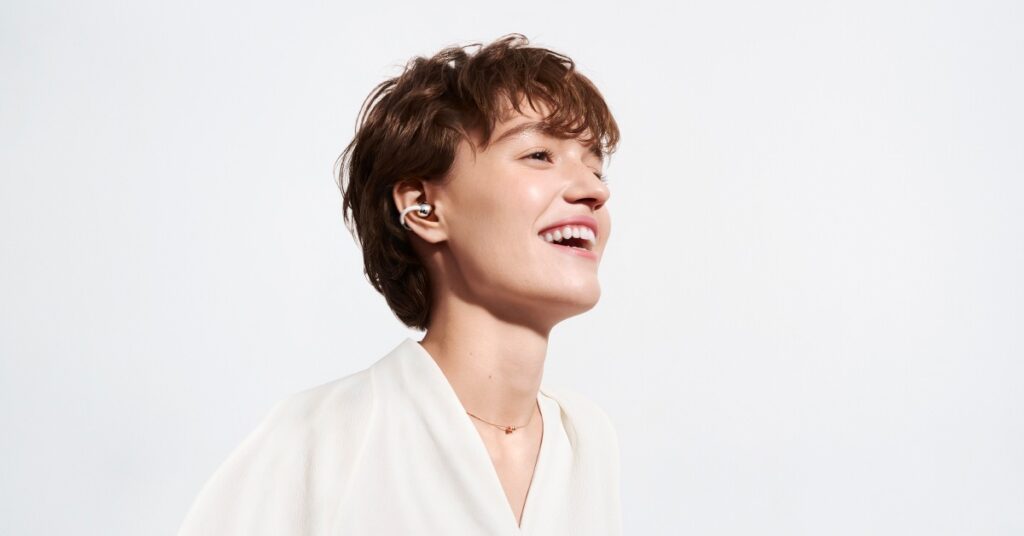
VAR
FROM SMART WEARABLES TO TRI-FOLD INNOVATION: 6 HUAWEI GADGETS THAT REDEFINE HOLIDAY GIFTING
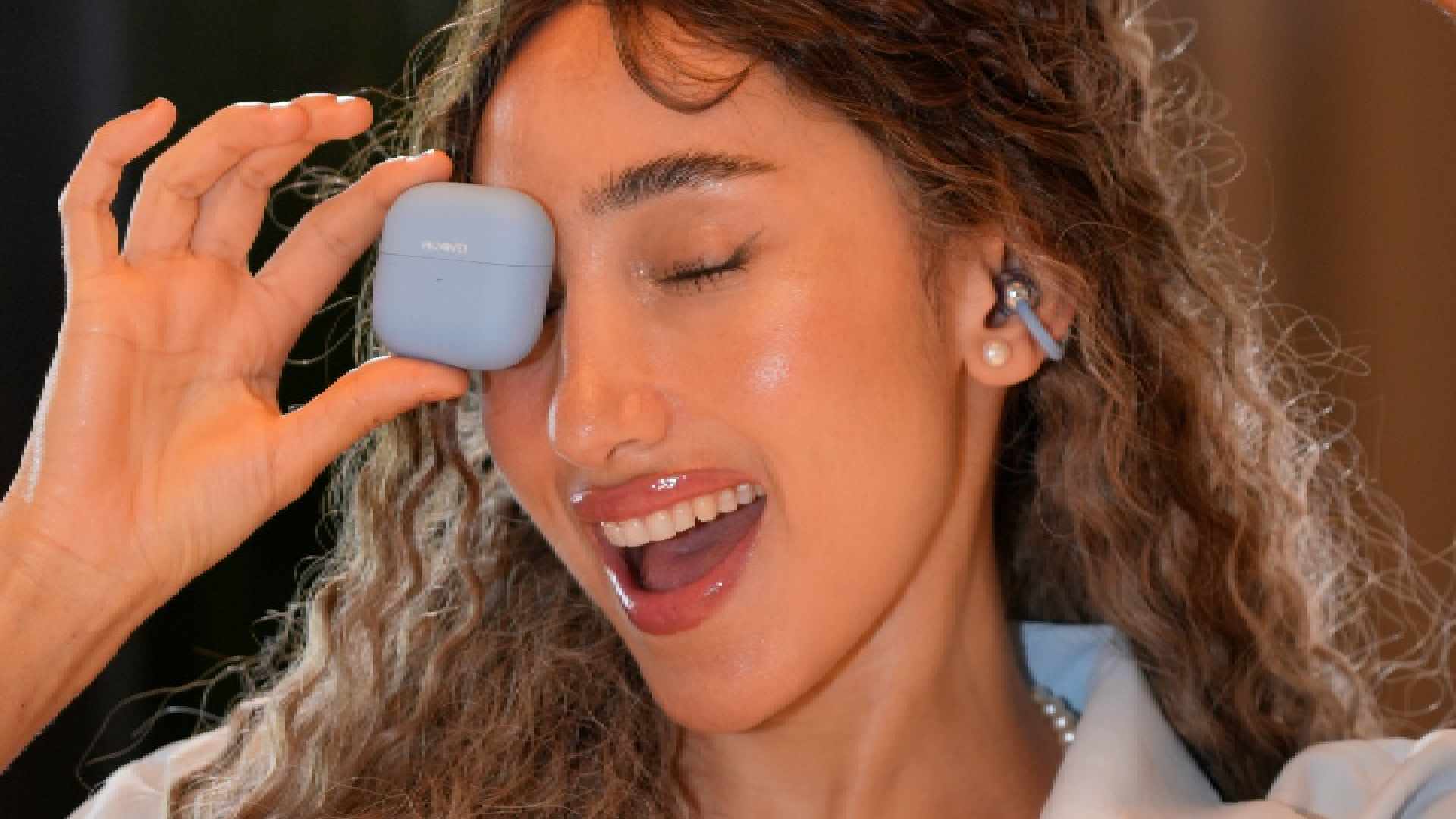
The holiday season is upon us. And as always, we’re met with a sudden panic over what to buy our loved ones. What does my mum want? What does my dad need? And what can I afford? These are the questions we ask ourselves as we walk around in the shopping mall or browse for the perfect present online. Choosing a meaningful present makes all the difference, but it’s rarely simple. Luckily, Huawei’s wide lineup of smartphones, earphones, wearables and tablets makes the process far less overwhelming.
To help you find the right gift this season, here’s a list of Huawei’s gadgets that fit any budget or taste.
Starting with the sure-fire option that anybody in your life will appreciate, the HUAWEI FreeClip 2. As the follow-up to the hugely popular open-ear earbuds from Huawei, the FreeClip 2 takes everything that people loved in the original FreeClip and makes it better. The earbuds come in a range of new stylish colours, including Blue, White, Rose Gold, and Black. Thanks to the extremely lightweight C-bridge design, these can be worn effortlessly throughout the day. If you are not playing anything, you might even forget they are there. Perhaps the most surprising feature is how good they sound, with incredible booming bass for open-ear earphones.
Now, if you are looking to impress with something more premium, you can go for the HUAWEI Mate XT ULTIMATE DESIGN — the phone that marked a new chapter for smartphones as the first-ever trifold one could actually buy. Featuring a massive tablet-sized 10.2-inch 3K display that folds down into a 6.4-inch regular smartphone size, it is one of the most versatile and striking devices you can gift this season. Now available in a new White vegan leather finish, the device adds a fresh, elegant touch that feels perfectly in tune with the holiday season. The clean, trendy aesthetic not only elevates its premium appeal but also makes it an ideal gift choice, effortlessly matching festive moods and winter styling.
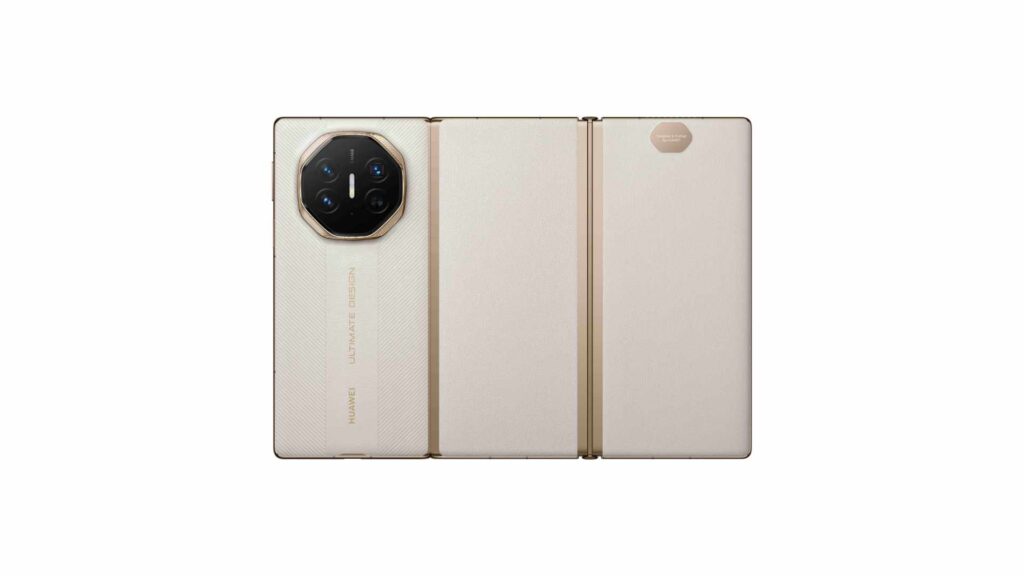
- The HUAWEI WATCH ULTIMATE DESIGN carries over the same luxury to wearables. Recently launched in a new Royal Gold Edition, the watch features an industry-first rare-earth purple ceramic bezel with 18K gold, paired with a zirconium-based liquid metal case and a purple-gold titanium alloy strap. With a host of features tailored for deep-sea divers, including an innovative waterproof system and sonar-based underwater communication, the watch brings serious performance to match its luxury build.
- If you want the deep-sea diving and underwater communication features but in a more rugged yet premium packaging, go for the HUAWEI WATCH Ultimate 2. Available in Blue and Black, the WATCH Ultimate 2 features a zirconium-based liquid metal case, with a dual-colour nanocrystal ceramic bezel and sapphire glass for excellent durability.
- The HUAWEI WATCH GT 6 Pro, on the other hand, is a great everyday smartwatch. Offering an incredible battery life of up to 21 days, it is an unparalleled workout companion with a host of new outdoor workout features. Powered by the upgraded TruSense system, the WATCH GT 6 Pro is designed for endurance.
- For the creators and professionals on your list, the HUAWEI MatePad 12 X PaperMatte Edition is a great pick. It combines the power of a PC, the creativity of a studio, and the comfort of paper, all in one sleek device. It packs a new and improved ultra-clear PaperMatte Display, enhanced with high-precision nanoscale etching for a much clearer and more comfortable view. When paired with the new HUAWEI M-Pencil Pro, this tablet can be the perfect canvas for ideas to flourish.
Figuring out the right gift for your loved ones is no easy task. If you don’t want to spend money on a gift that will end up in somebody’s drawer catching dust, then make sure that you give them something truly special. Happy Holidays!
VAR
HUAWEI Mate XT ULTIMATE DESIGN Remains the Trifold Benchmark

The evolution of smartphones took a new trajectory in the summer of 2024. After months of speculation and rumours, as Huawei unveiled the first-ever commercially available trifold to the world, it was praised universally. It proved that there is still room for groundbreaking innovations in smartphones. The HUAWEI Mate XT was so ahead of its time, it took the competition over a year to release a viable triple fold.
People now use their smartphones for way more. Smartphones have replaced a multitude of gadgets for everyday things like cameras, televisions, music players, and, to some extent, laptops. You no longer have to scramble for a laptop to send an urgent email or fumble with paper maps to navigate a strange city. Officially called the HUAWEI Mate XT ULTIMATE DESIGN, Huawei’s trifold smartphone was an answer to the growing demand for smartphones capable of multitasking and more immersive media consumption. Offering users the largest smartphone screen experience with a single 10.2-inch display that folds down into a convenient regular smartphone form factor, it expands the possibilities of smartphone interactions and multitasking.
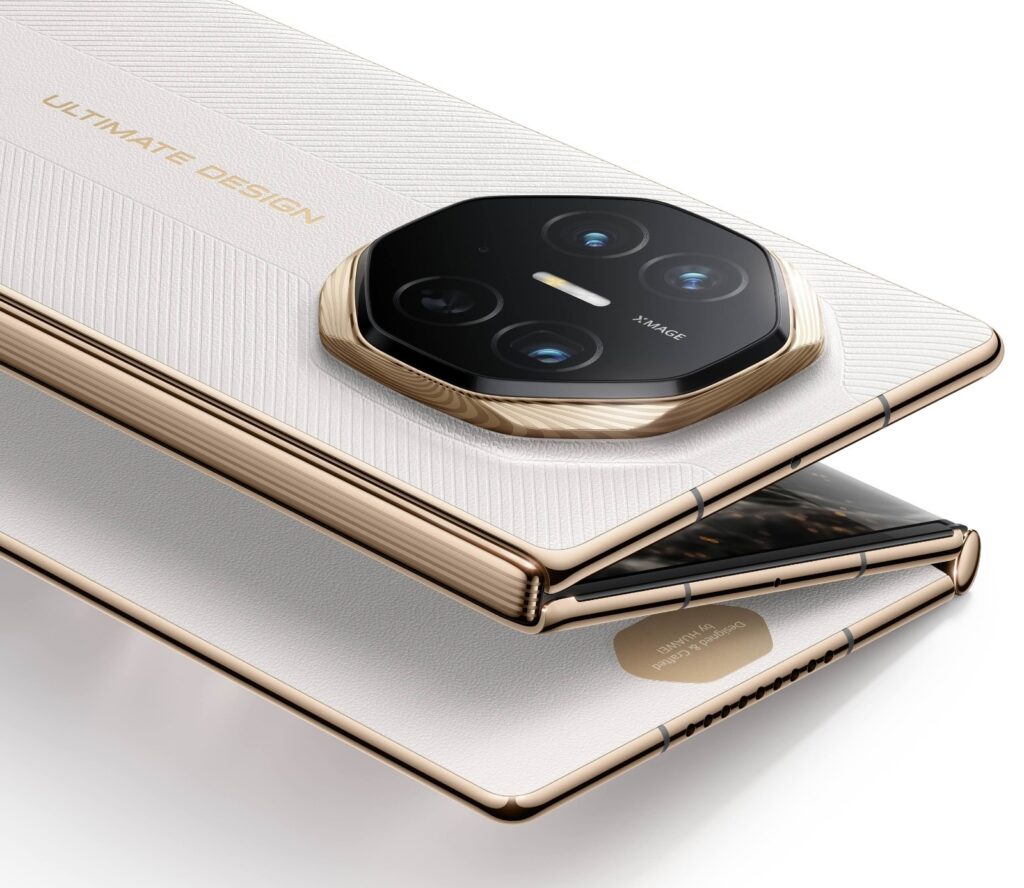
Now, Huawei is expanding the Mate XT line with more colour options. Previously only available in Red and Black, the phone will be available starting next week in the white vegan leather finish. This new finish gives the device a more refined, minimalist aesthetic.
Despite widening competition, the Mate XT is still the benchmark for what a trifold smartphone can be. The Mate XT’s ingenious Z-shape folding method, where one side folds inward and one outward, has a unique benefit. It uses a single continuous display that unfolds into a tablet, and when folded to a regular smartphone size, one-third of that same screen becomes the outer display. It’s a cleaner, more coherent experience.
Trifold experiments from other brands also fall short of Mate XT in charging speeds, battery capacity and screen resolution. Even a whole year and few months after the initial release, the Mate XT is still the slimmest and lightest trifold in the market. Performance and durability follow the same pattern. The groundbreaking Advanced Precision Hinge System, made of ultra-strong, high-strength steel, offers a smooth, effortless and precise opening and closing experience.
A year on, the Mate XT remains the trifold smartphone others measure themselves against. It’s a category that Huawei created, defined, and continues to push forward while everyone else is still trying to catch up.
-

 Tech News1 year ago
Tech News1 year agoDenodo Bolsters Executive Team by Hiring Christophe Culine as its Chief Revenue Officer
-

 VAR9 months ago
VAR9 months agoMicrosoft Launches New Surface Copilot+ PCs for Business
-

 Tech Interviews2 years ago
Tech Interviews2 years agoNavigating the Cybersecurity Landscape in Hybrid Work Environments
-

 Tech News6 months ago
Tech News6 months agoNothing Launches flagship Nothing Phone (3) and Headphone (1) in theme with the Iconic Museum of the Future in Dubai
-

 Tech News2 years ago
Tech News2 years agoBrighton College Abu Dhabi and Brighton College Al Ain Donate 954 IT Devices in Support of ‘Donate Your Own Device’ Campaign
-

 Editorial1 year ago
Editorial1 year agoCelebrating UAE National Day: A Legacy of Leadership and Technological Innovation
-

 Tech Features11 months ago
Tech Features11 months ago5 Urgent Questions About Healthcare Network Cybersecurity in the Middle East
-

 Cover Story10 months ago
Cover Story10 months agoUnifonic Leading the Future of AI-Driven Customer Engagement






